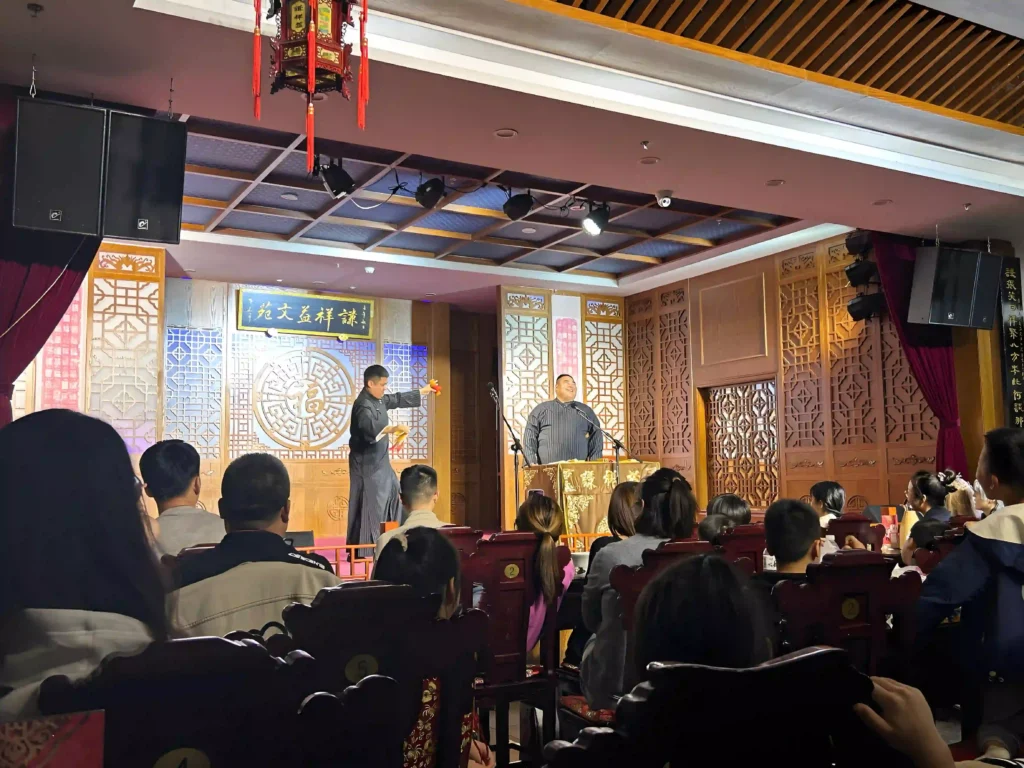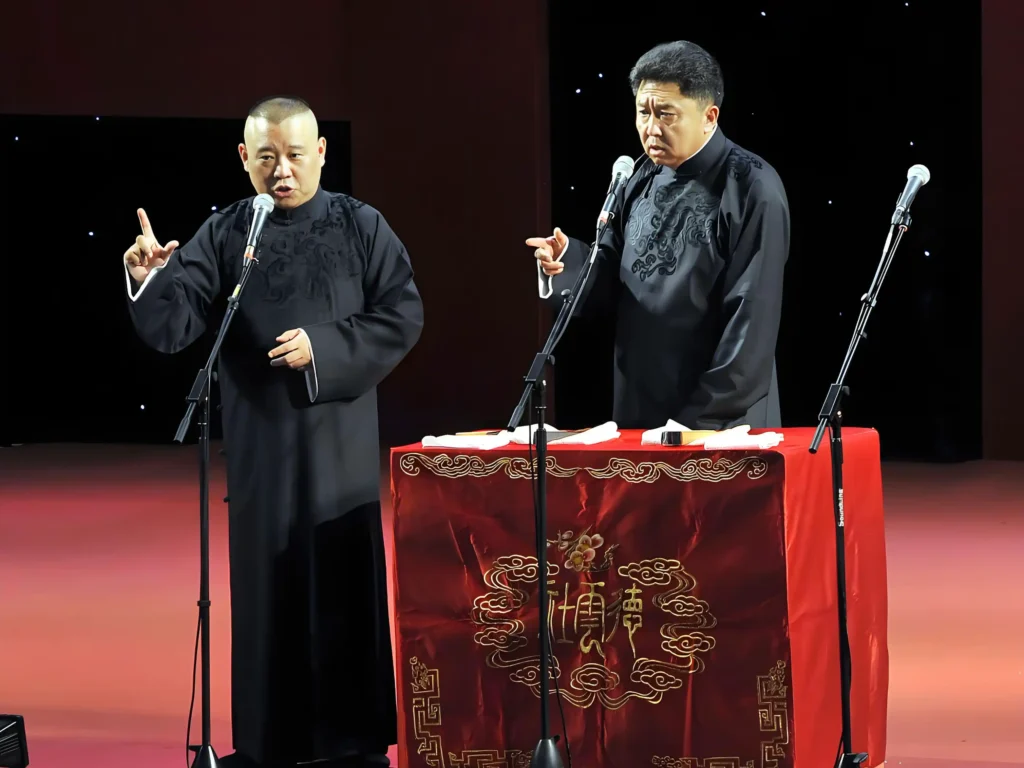🎧 Listen to text audio:

相声 是 一种 有趣 的 中国 表演 艺术。
English
Xiangsheng is an interesting Chinese performing art.
相声 有 一 百 多 年 的 历史。
English
Xiangsheng has a history of over a hundred years.

相声 表演 一般 有 两 个 人。
English
A Xiangsheng performance usually has two people.
演员 用 说、学、逗、唱 让 观众 开心。
English
Performers use talking, imitating, teasing, and singing to make the audience happy.
观众 可以 在 剧场 或者 网上 看 相声表演。
English
The audience can watch Xiangsheng performances in theaters or online.
相声有 很 多 传统 的 内容,现在 又 增加 了 很多 创新 的 内容。
English
Xiangsheng has many traditional elements, and now it has added many innovative elements.
相声 正在 重新 获得 年轻 人的 喜爱。
English
Xiangsheng is regaining the love of young people.
语法点 (Grammar Points)
1. 有…还有… – There is… and also…
This structure is used to list different things.
文中 (In text):
– 这是烤串,有羊肉、鸡肉,还有蔬菜。
– These are skewers. There is lamb, chicken, and also vegetables.
例 (Example):
– 我的书包里有书,还有一个苹果。
– There are books in my bag, and also an apple.


